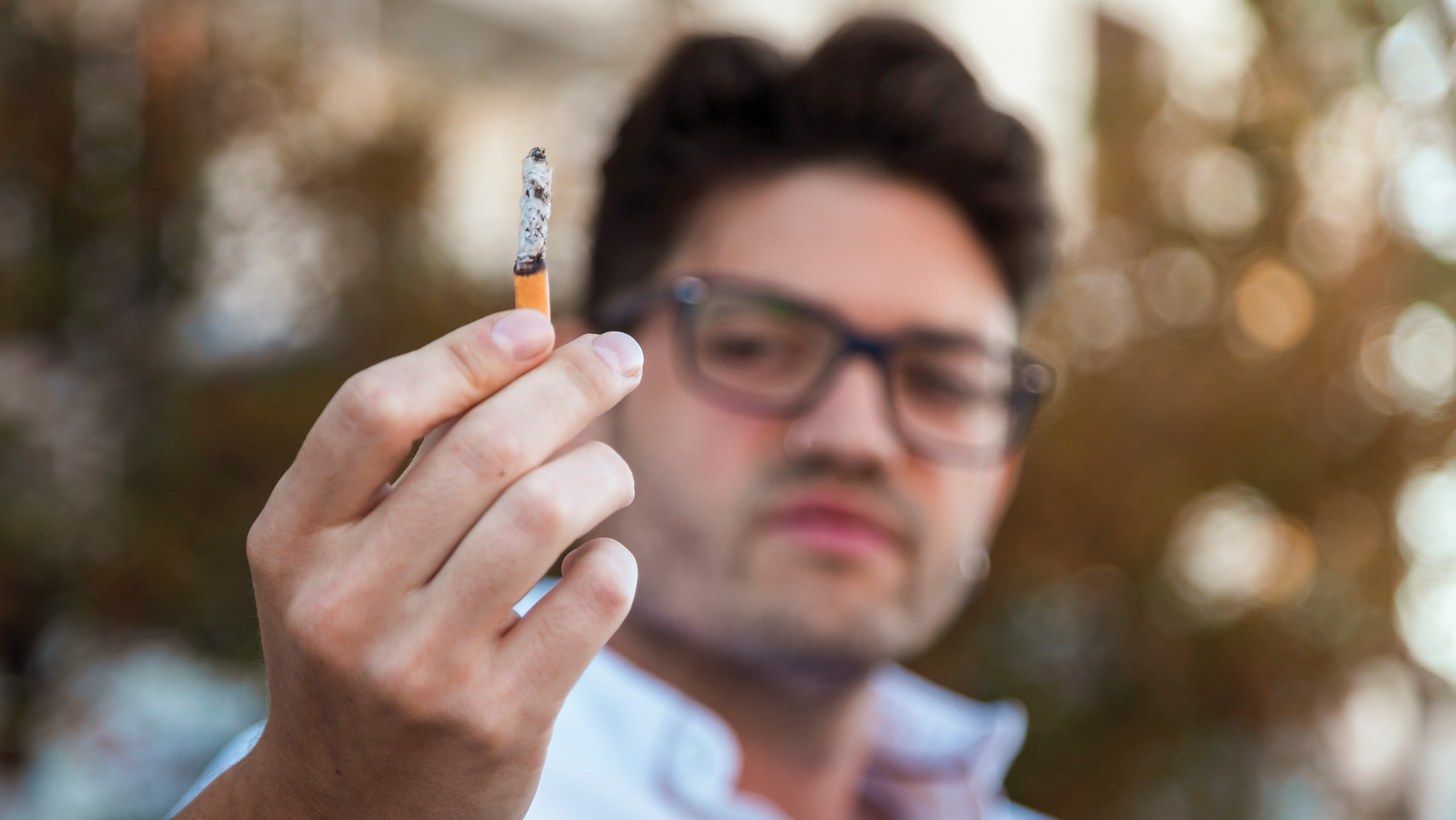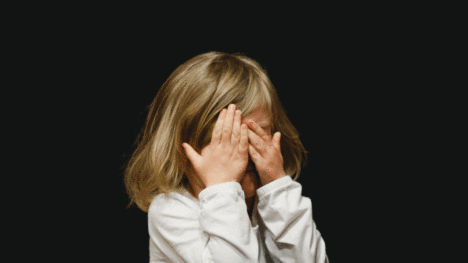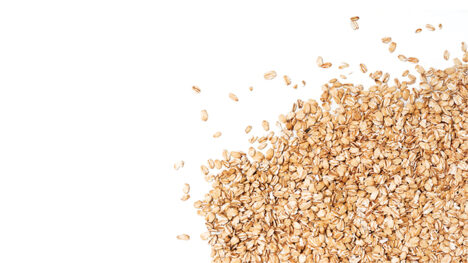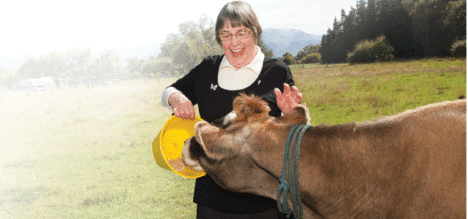
Patricia started smoking in the 1970s. As a 22-year-old journalist in New Zealand, she says it helped her to survive a stressful job. She’d have her first cigarette of the day when she got to work, and proceed to burn through a packet of twenty.
“Nicotine gave you a heady sensation,” says Patricia. “It was calming and addictive.”
About that time she met and married Bob. A keen smoker, he scoffed at the notion the habit could cause cancer. Together they went to England, where both continued to smoke.
Later, when the hazards of smoking were better recognised, Bob decided to quit. But Patricia was hooked by then. When she became pregnant she started to feel guilty about her habit and abandoned it for a while. But on their return to New Zealand, with all the stresses and strains that entailed, she took it up again. With Patricia’s second pregnancy came more guilt.
“I’d always been healthy and athletic,” she says. “Now, I started to get mad at the tobacco companies. I disliked this nasty habit they had conned me into and I no longer wanted to be exploited by them.”
Yet all her attempts to quit were unsuccessful. She had no willpower against nicotine.
Patricia had a Christian friend who worried about her and asked if she could pray with her. Patricia agreed.
“Lord,” the friend prayed, “please take away Pat’s desire to smoke.”
“Some time later,” Patricia says, “I realised I hadn’t had a smoke for three days! God must have done this. I’d given up cigarettes without missing a beat. That was 42 years ago.”
She says now she never judges people who experience that struggle. She totally understands what it’s like to be addicted and believes divine intervention is the only answer.
A smoke-free New Zealand?

Many people New Zealanders are addicted to smoking today, especially Maori, and the Government is taking notice. In 2010 the Maori Affairs Select Committee began an inquiry into the effects of tobacco use. They looked at how the tobacco industry had encouraged Maori to smoke and how this had impacted their health. They found that while overall smoking rates in New Zealand were coming down, the rates among Maori and Pacific peoples were going up. Maori are still three times more likely to smoke than non-Maori, and Maori teens start smoking at fourteen years of age, on average.
Today Maori women have the highest smoking rate of all New Zealand groups, at 36 per cent, according to Ministry of Health statistics. Not surprisingly, they also have the highest lung cancer rates in the world, together with tobacco-related illnesses such as emphysema, cancer and heart disease. Whole extended families or whanau have been affected, including children, the unborn and elders, whose premature death prevents cultural traditions, knowledge and histories from being passed on.
New Zealand’s Pacific peoples are affected as well. They have the second-highest smoking rates after Maori and are more vulnerable to tobacco-related sicknesses than the non-Pacific population. And all smokers, regardless of ethnicity, are apt to have poor mental health and to binge drink. In this country around 500 people die prematurely each year from second-hand smoke. (Worldwide, the number is estimated to be 600,000.)
For these and other reasons, the Select Committee recommended measures “to remove tobacco from our country’s future in order to preserve Maori culture for younger generations.” The government’s response was to declare the goal of a smoke-free Aotearoa New Zealand by 2025. Through awareness campaigns, tobacco taxes and stricter legislation, the aim is to reduce smoking prevalence to five per cent or less; to the place where smoking is “essentially” non-existent in both public and home environments.
Hopeful signs
A smoke-free New Zealand, even it was caveated as an “aspirational” goal, is ambitious, if not world-leading. But the government, despite not accepting many of the Select Committee’s more hardline recommendations, has taken decisive steps, passing Australian-style plain packaging legislation that took effect in 2018, and introducing a bill that will make it illegal to smoke or vape in vehicles carrying under-18s.
The good news is that these strategies appear to be working; Kiwis now smoke less than they used to. So although 490,000 New Zealand adults still smoke daily, more than 968,000 have quit the habit and about two thirds of all New Zealanders have never smoked regularly. Between 2010 and 2018 the amount of tobacco smoked per person decreased by 39 per cent. Having said that, progress towards a smoke-free nation is slower than hoped. At the benchmark halfway point in 2018, smoking rates were at 15 per cent, rather than the 12.5 per cent they needed to be to meet the five per cent smoking prevalence target by 2025.
As a further motivation or us to quit, the government has been steadily increasing the price of cigarettes via tobacco excises. With New Zealand’s smoke-free deadline just five years away, the cost of a single cigarette is now about $2. The latest in a series of annual tax-based price increases came into effect in January this year. A pack of 25 cigarettes will now set you back $40.
Smoking among youth
What will it take to encourage smoke-free youth in New Zealand? Having friends who smoke reinforces smoking as a social activity, as does having parents who smoke and allow smoking in the house. So the family environment is crucial.
Students are more likely to smoke if they have access to cigarettes—particularly from family or friends—and if they can afford them. Kids most at risk are those who have low self-esteem and engage in other dicey behaviours. On the other hand, suggests research from the Health Sponsorship Council, teenagers are less likely to smoke if they are doing well at school, have future aspirations, take part in community activities or sports clubs, have a religious or spiritual practice, and are connected with their family.
Statistics show that if you can make it to 25 without smoking you probably won’t start. So the government has set its sights on young people, who it seems are getting the message. According to the ASH campaign organisation, the daily smoking rate for 14 and 15-year-olds fell to just under two per cent in 2018, the lowest rate ever. Today most youth in New Zealand (97 per cent) are smoke-free. In fact more than 80 per cent of them have never even had a puff of tobacco.
Nonetheless, too many young Kiwi adults are still hooked on nicotine. Currently, 19 per cent of those aged 18 to 24 are puffing away. This group often minimises the risks and addictiveness of tobacco.
What about vaping?
In October 2017 the Ministry of Health stated that vaping products had “the potential to make a contribution to the Smokefree 2025 goal.” But the benefits of vaping are disputed; it hasn’t been around long enough for us to know its long-term risks. Some say vaping is as bad as smoking, while others say it helps you to quit smoking.
The jury is still out, but breathing any product into your lungs unnecessarily is not ideal. The side effects of vaping depend on how much is inhaled and what style of e-liquid is chosen. The most common side effects include coughing, dry mouth and throat, shortness of breath, mouth and throat irritation and headache. Do these sound familiar? Such effects are also the result of smoking! For this reason, vaping is recommended only for smokers wanting to quit.

Looking ahead
A smoke-free environment will make a huge difference to the well-being of New Zealanders. We’ll be healthier and there is less chance our children will smoke or breathe in second-hand smoke. People will save money by not supporting an industry that, according to the World Health Organization, annually contributes to about six million deaths around the globe.
In New Zealand, nearly 15 per cent of all adults still smoke. But this means nearly 85 per cent of us are choosing not to. That’s important progress towards achieving the Smokefree 2025 vision.
“It’s not about banning smoking,” says the Smokefree NZ website. “It’s about taking action against tobacco so that by 2025, hardly anyone will still want to smoke.”
Julie Belding is a freelance writer and editor who lives in Auckland, New Zealand. Unless otherwise indicated, information in this article about the prevalence and effects of smoking, and the Smokefree 2025 initiative was drawn from <smokefree.org.nz>, <health.govt.nz>, <ash.org.nz> and <vapingfacts.health.nz>.









